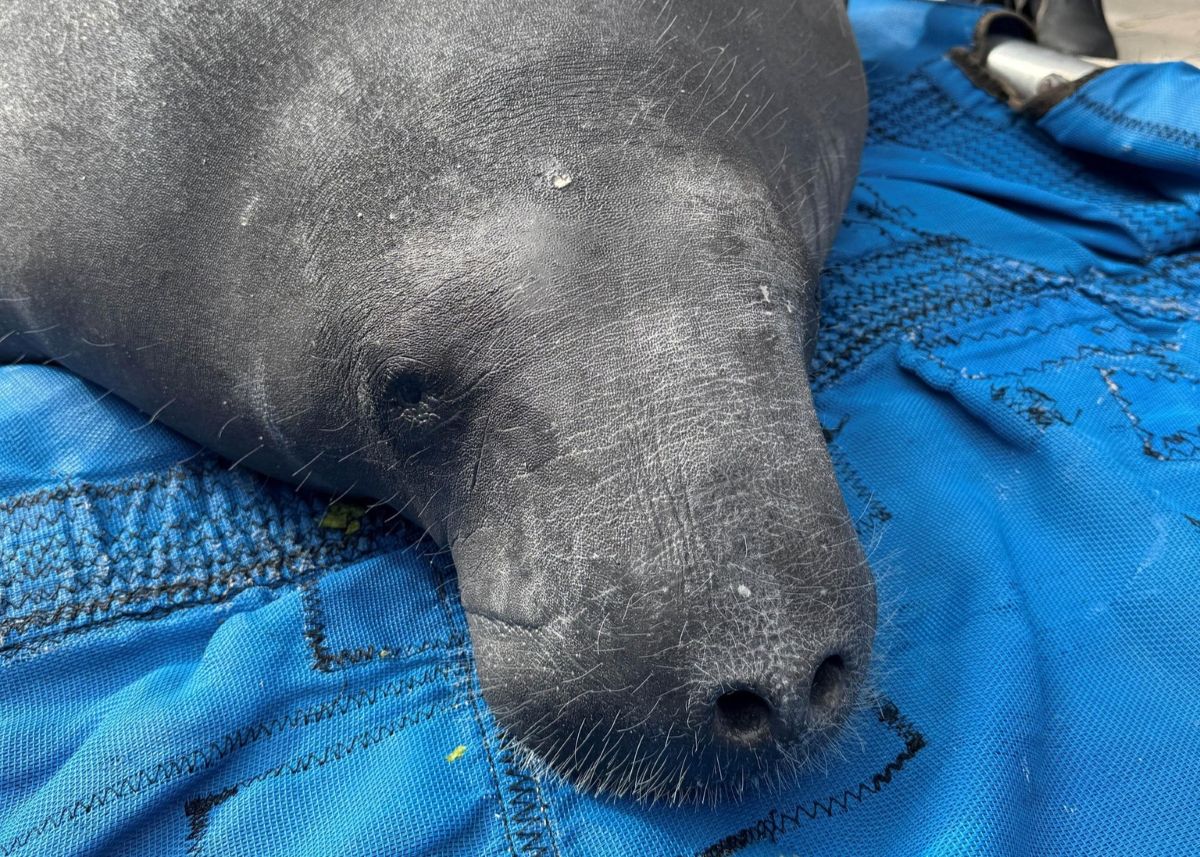
The manatee rescued from a Tar River canal last fall is healthy and back in the wilds of Florida’s Gulf Coast waters.
The 9-foot female is the first documented case of a successful manatee rescue in North Carolina.
Supporter Spotlight
The manatee, aptly nicknamed Pamlico, was released on Thursday at a popular “warm up station” in Apollo Beach on Florida’s Tampa Bay after being medically cleared by SeaWorld Orlando and U.S. Fish and Wildlife Service.
The discharge canal where she was released is a state and federally designated manatee sanctuary that includes The TECO Manatee Viewing Center.
Pamlico was found stranded last November at a Greenville Utilities Commission’s wastewater treatment plant outfall. She suffered from cold stress and boat strike-related injuries.
Her Nov. 18 rescue entailed a team effort that included officials with Fish and Wildlife Service, SeaWorld Orlando, Clearwater Marine Aquarium Research Institute, North Carolina Wildlife Resources Commission, North Carolina Aquariums, University of North Carolina Wilmington Marine Mammal Stranding Program, N.C. State University’s Center for Marine Sciences and Technology and its College of Veterinary Medicine.
Pamlico remained in the care of SeaWorld Orlando’s manatee critical care facility until her release.
Supporter Spotlight
“This was an impressive team effort with organizations from North Carolina to Florida coming together to successfully rescue, transport, rehabilitate and release this manatee,” Fish and Wildlife Service’s Florida Manatee Recovery Lead Terri Calleson said in a statement. “We greatly appreciate the reports from the public as well as the heroic efforts of all of these partners who had a hand in helping return this manatee to the wild population.”
Fish and Wildlife Service staff were joined by those with the Florida Fish and Wildlife Conservation Commission, SeaWorld Orlando and the TECO Manatee Viewing Center at Tampa Electric’s Big Bend Power Station in Pamlico’s release.
Manatees cannot survive for extended periods of time in water temperatures below 68°F.
Manatee sightings in North Carolina have been on the rise during warmer months, according to the University of North Carolina Wilmington’s Marine Mammal Stranding Program.
“As global climate change continues to create warmer ocean temperatures, this is creating more suitable habitat areas for manatees along the Atlantic coast, causing them to venture farther away from Florida,” Assistant Stranding Coordinator Alison Loftis said in a release. “However, this becomes a problem when water temperatures drop below 68°F. Water temperatures in the fall and winter can drop rapidly in North Carolina, trapping manatees in dangerously cold water and putting them at high risk of cold stress, as we saw in Pamlico’s case.”
Feeding manatees or giving them water is illegal and may cause them to delay their migration south to warmer water. Manatees accustomed to being around people may lose their natural fear of boats and humans, which makes them more susceptible to harm.
“There are ways that our communities can help protect manatees in North Carolina,” Loftis said. “Through valuable information collected from sighting reports, biologists can learn more about how manatees are using our waters and the best ways to protect them. Through community-based science, everyone can be part of manatee conservation by submitting manatee sighting information to researchers.”
Reports of an injured or deceased manatee in North Carolina may be made by calling the 24-hour marine mammal stranding hotline at 910-515-7354.
Sightings of healthy manatees in the state may be submitted to the program. Submissions should include the manatee’s location and, if possible, photographs.
In observance of Martin Luther King Jr. Day and in recognition of the continued struggle for civil rights, Coastal Review will not publish on Monday, Jan. 20.







